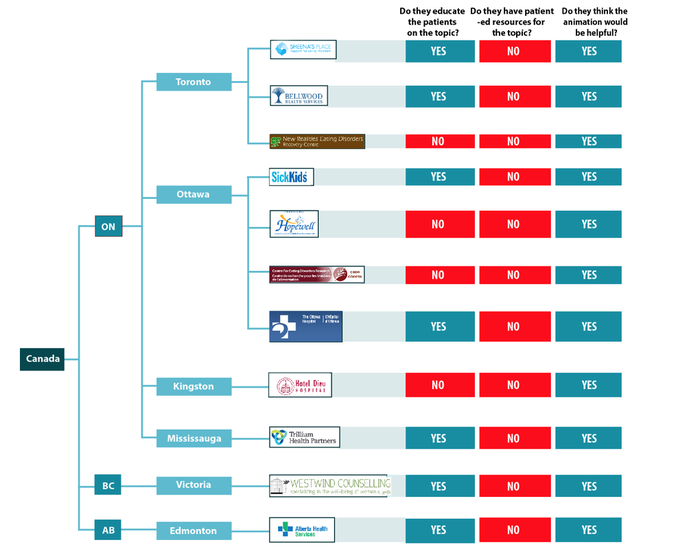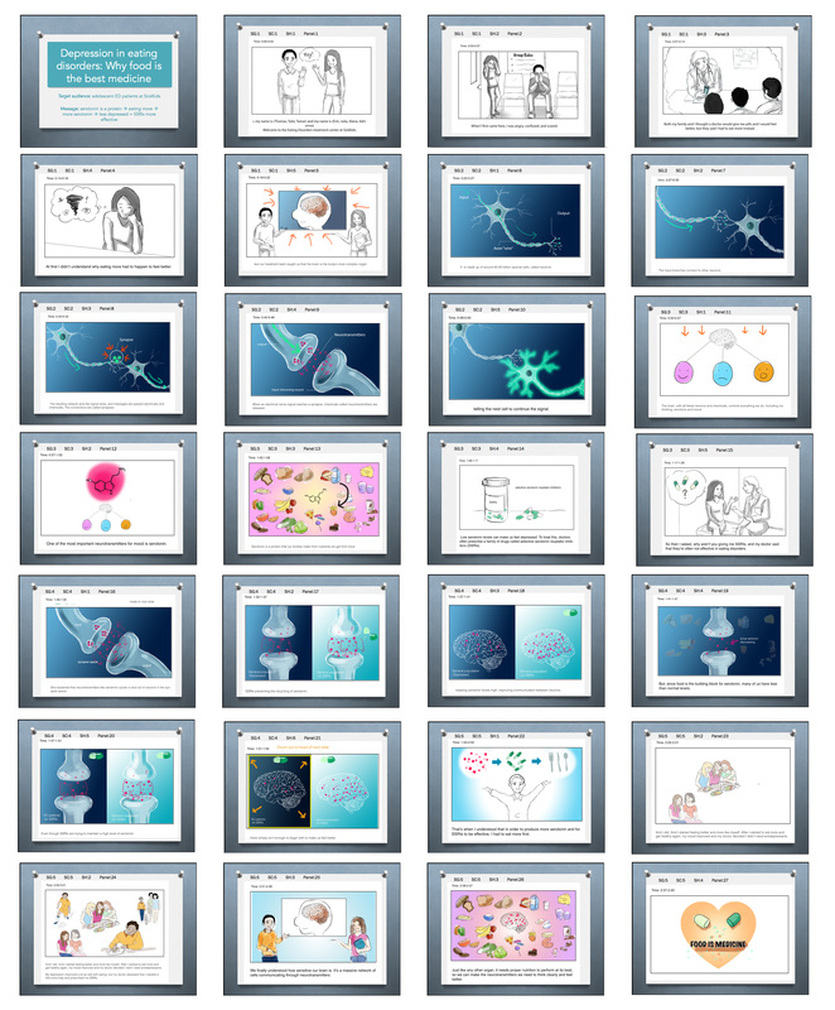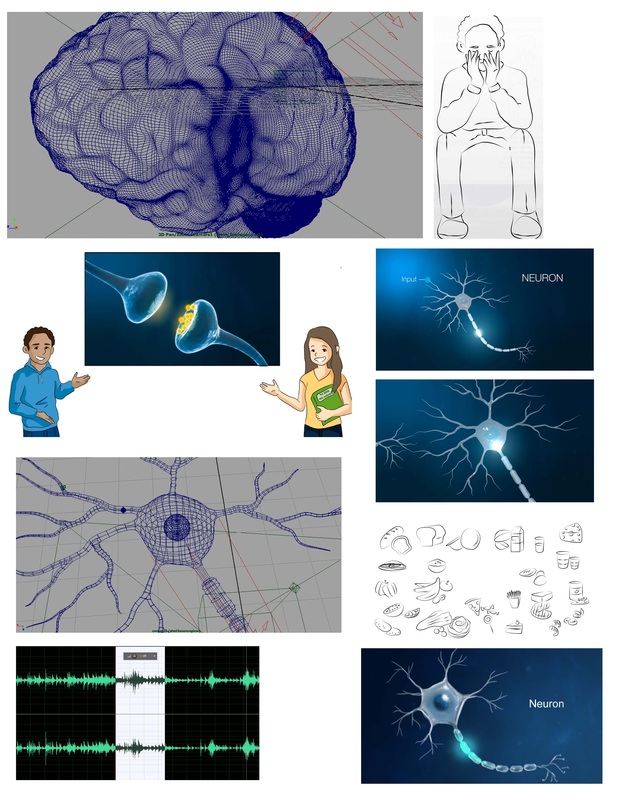|
|
|
|
|
|
INFORMATION
current status and future direction
A quality assurance assessment will be conducted at SickKids and a methods paper will be written. The project will also be presented as a poster in future eating disorder conferences and to eating disorder professionals. Women's College Hospital is collaborating with this project to pilot the Online Psychiatric Education Network (OPEN) initiative, and a modified version of the animation will be made for continuing medical education and professional development. BACKGROUND

An eating disorder (ED) is a psychological illness characterized by abnormal eating behavior and thoughts about body shape and weight1. When admitted to treatment centers, patients with EDs are often suffering from malnutrition and thus lack essential nutrients needed for the production of the neurotransmitter serotonin (5-HT). 5-HT insufficiency plays a major role in depressive, anxious, and obsessional symptoms commonly seen in those with EDs1. Intake of selective serotonin reuptake inhibitors (SSRIs) is the pharmacological treatment method preferred to treat these symptoms. However, unless nutrition status is restored, SSRIs will lack efficacy, as the body cannot produce enough 5-HT when in a state of starvation2. Therefore, it is essential that patients with EDs and their families understand that the key to successful treatment of depressive symptoms is nutrient restoration achieved through adherance to meal plans.
However, there is a lack of patient education (PE) resources in the field of EDs. A telephone survey I conducted in preparation for this proejct revealed that 11 of the major ED treatment centres in Canada have no resources for use in educational modules on this topic, or enough PE resources in general. Furthermore, existing PE resources are inadequate in that: (1) they are limited to verbal and written information; (2) they lack audio and visual material; (3) the few videos available are outdated by 10-20 years; (4) they do not address the cognitive challenges faced by ED patients; (5) and the info is not easily comprehensible to the general public. Therefore, for my masters research project (MRP), I propose to create a 3- to 5-minute animation for use in the first information session at ED treatment programs to educate adolescent patients and their families on the link between nutrition, 5-HT, depression, and treatment. This project is the first of its kind in the biomedical communications field and is a starting point for the development of future PE resources for ED treatment. Resource AuditI personally contacted 11 of the major eating disorder treatment centers in Canada and conducted a survey asking if they educated patients on the topic of serotonin and depression, if they had patient education resources for this topic, and if my proposed animation would be clinically helpful at their location.
|




